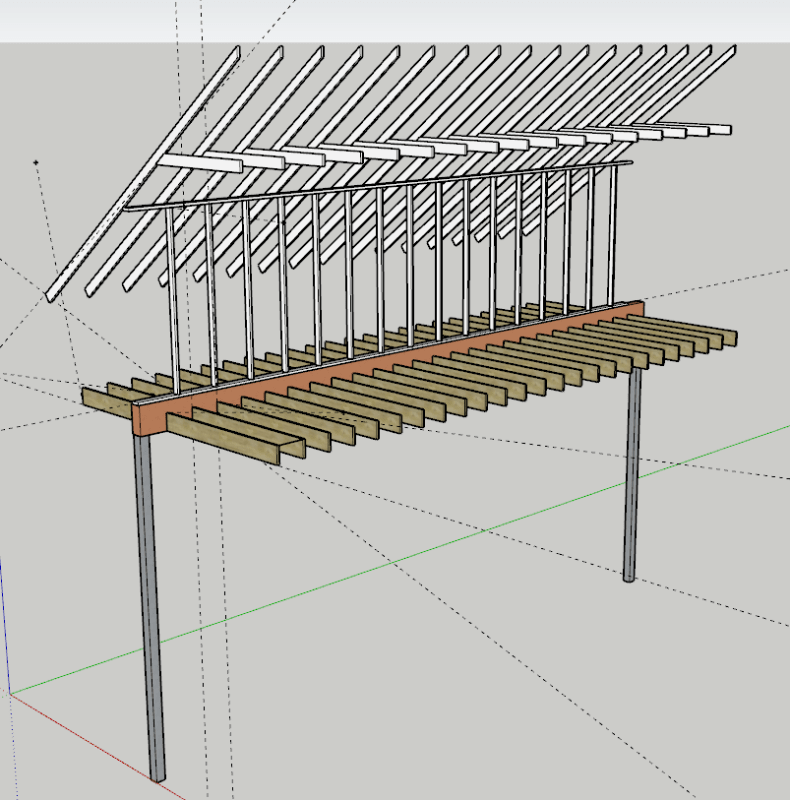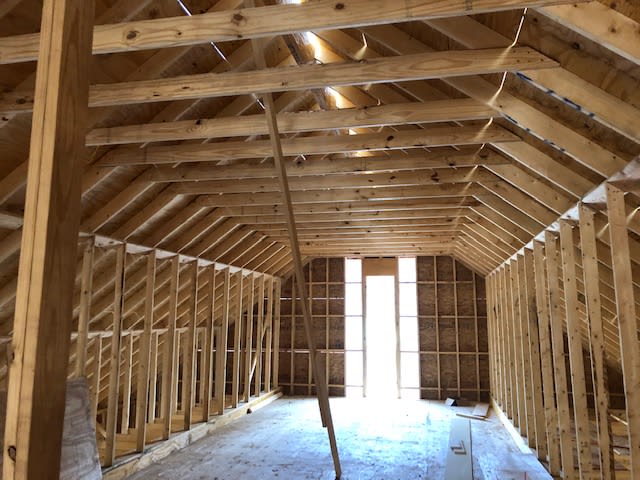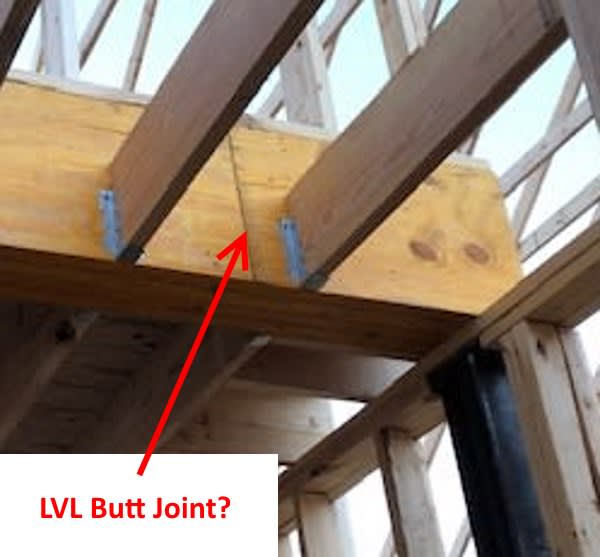I was contacted by a building owner that wanted to build out his attic space into offices, and needed to ensure that 2 installed beams (Beam were never previously Engineered) are adequate to handle the additional live and dead loads.
There are two beams in question, each comprised of Four 2x16 LVLs fastened together and 35 ft in length. They are supported at the ends by two 5.5"x5.5"x0.25" Square HSS. The rest of the ceiling is framed laterally with 2x10s 16" o.c.
Rather than Model the entire building, I modeled just column/beam frame (diagram attached), and am wanting to put the distributed dead, live and wind load on the beam for my analysis.
My STAAD model results are currently showing Fail, and also a mid-point Deflection of about 3" (L/140).
Looking at the roof framing, is the rafter bracing wall - that sits directly onto the beam - picking up much load? or does most of the roof load go to the exterior walls? I'm making sure I'm accurately calculating all loads before recommending a different solution (Being that the beam is currently installed).
35' is a heck of a span to begin with. Not many LVL manufacturers have spans listed that high in their literature.
I appreciate the insight.







There are two beams in question, each comprised of Four 2x16 LVLs fastened together and 35 ft in length. They are supported at the ends by two 5.5"x5.5"x0.25" Square HSS. The rest of the ceiling is framed laterally with 2x10s 16" o.c.
Rather than Model the entire building, I modeled just column/beam frame (diagram attached), and am wanting to put the distributed dead, live and wind load on the beam for my analysis.
My STAAD model results are currently showing Fail, and also a mid-point Deflection of about 3" (L/140).
Looking at the roof framing, is the rafter bracing wall - that sits directly onto the beam - picking up much load? or does most of the roof load go to the exterior walls? I'm making sure I'm accurately calculating all loads before recommending a different solution (Being that the beam is currently installed).
35' is a heck of a span to begin with. Not many LVL manufacturers have spans listed that high in their literature.
I appreciate the insight.












![[idea] [idea] [idea]](/data/assets/smilies/idea.gif)